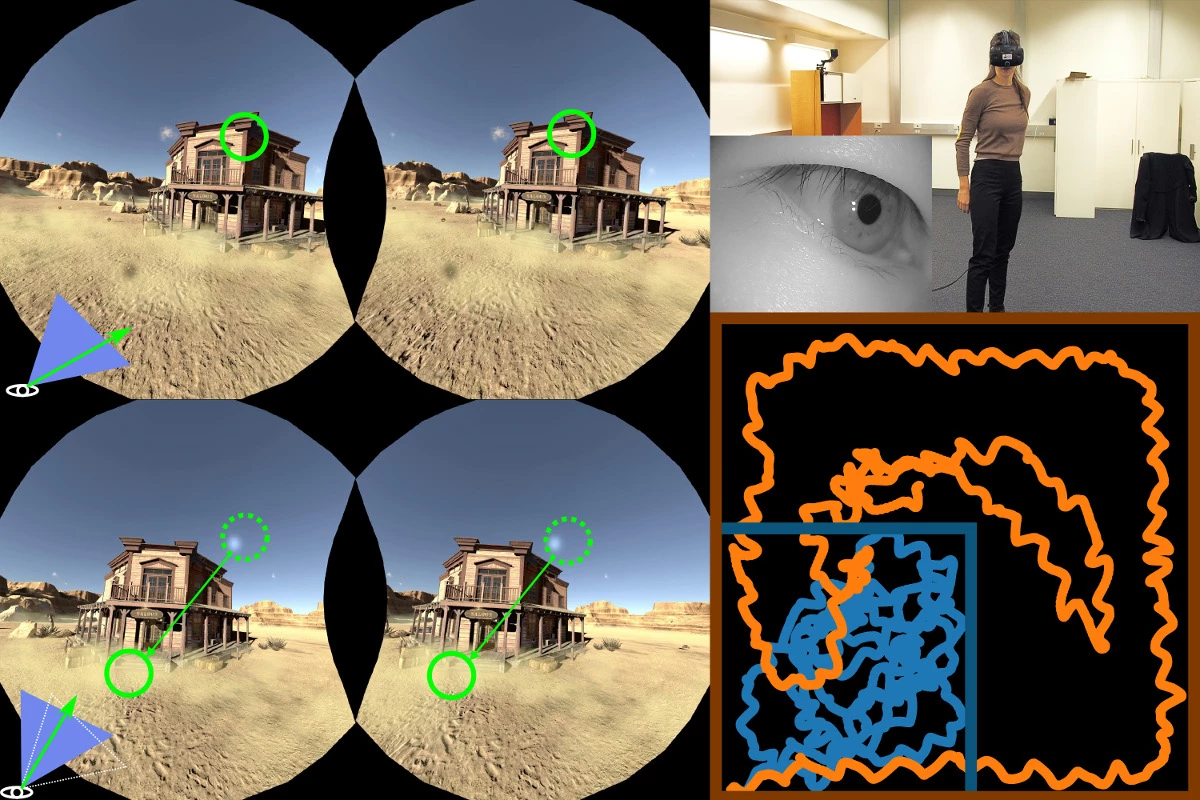Virtual reality is great at immersing us in gigantic worlds that seem to go on forever – until you take three steps and bump into the living room wall that you forgot was there. Now, computer scientists have developed a system that can trick you into walking around in circles in the real world, while thinking you're moving longer distances in the virtual world.
Moving around in VR is one of the key problems facing the technology, and for now most games fall back on letting you teleport around. More creative physical ideas include treadmills like the Virtuix Omni and the Kat Walk, suspended suit rigs like AxonVR, and boots like Taclim or Jamie Hyneman's Electric Shoes. And of course, venues like Zero Latency just open things up by giving you a whole warehouse to wander around in.
The new system, developed by computer scientists from Stony Brook University, Nvidia and Adobe, is surprisingly simple but effective, built around a quirk of human vision. To take in our surroundings, our eyes dart around to points of interest, making rapid movements that are known as saccades. To keep ourselves oriented, our brains momentarily ignore visual signals during these motions, in a phenomenon called saccadic suppression.
The researchers rigged up a system to take advantage of these regular moments of effective blindness. An HTC Vive headset was fitted with eye-tracking technology from SMI, and whenever the system detects a saccadic suppression episode, it very slightly rotates the virtual "camera." That makes the user subconsciously readjust which way they're facing.

In effect, that tricks the player into slowly turning themselves around, giving the illusion that they're walking endlessly. To get people to turn more sharply – say if they're getting close to a real-world wall – the system can invoke saccadic suppression by creating points of contrast at the edge of the player's field of view, which they'll instinctively look towards.
"In VR, we can display vast universes; however, the physical spaces in our homes and offices are much smaller," says Qi Sun, lead author of the study. "It's the nature of the human eye to scan a scene by moving rapidly between points of fixation. We realized that if we rotate the virtual camera just slightly during saccades, we can redirect a user's walking direction to simulate a larger walking space."
The team says the system can dynamically plan a path so fast it can detect and redirect players around objects like furniture, as well as moving obstacles like other people.
In tests, users reported not even noticing the system at work. They were able to wander around virtual environments that felt much bigger than the real-world room, avoiding walls, obstacles and other people.
"Currently in VR, it is still difficult to deliver a completely natural walking experience to VR users," says Sun. "That is the primary motivation behind our work--to eliminate this constraint and enable fully immersive experiences in large virtual worlds."
The research will be presented at the SIGGRAPH conference in August. It can be seen in action in the video below.
Source: Association for Computing Machinery via EurekAlert




